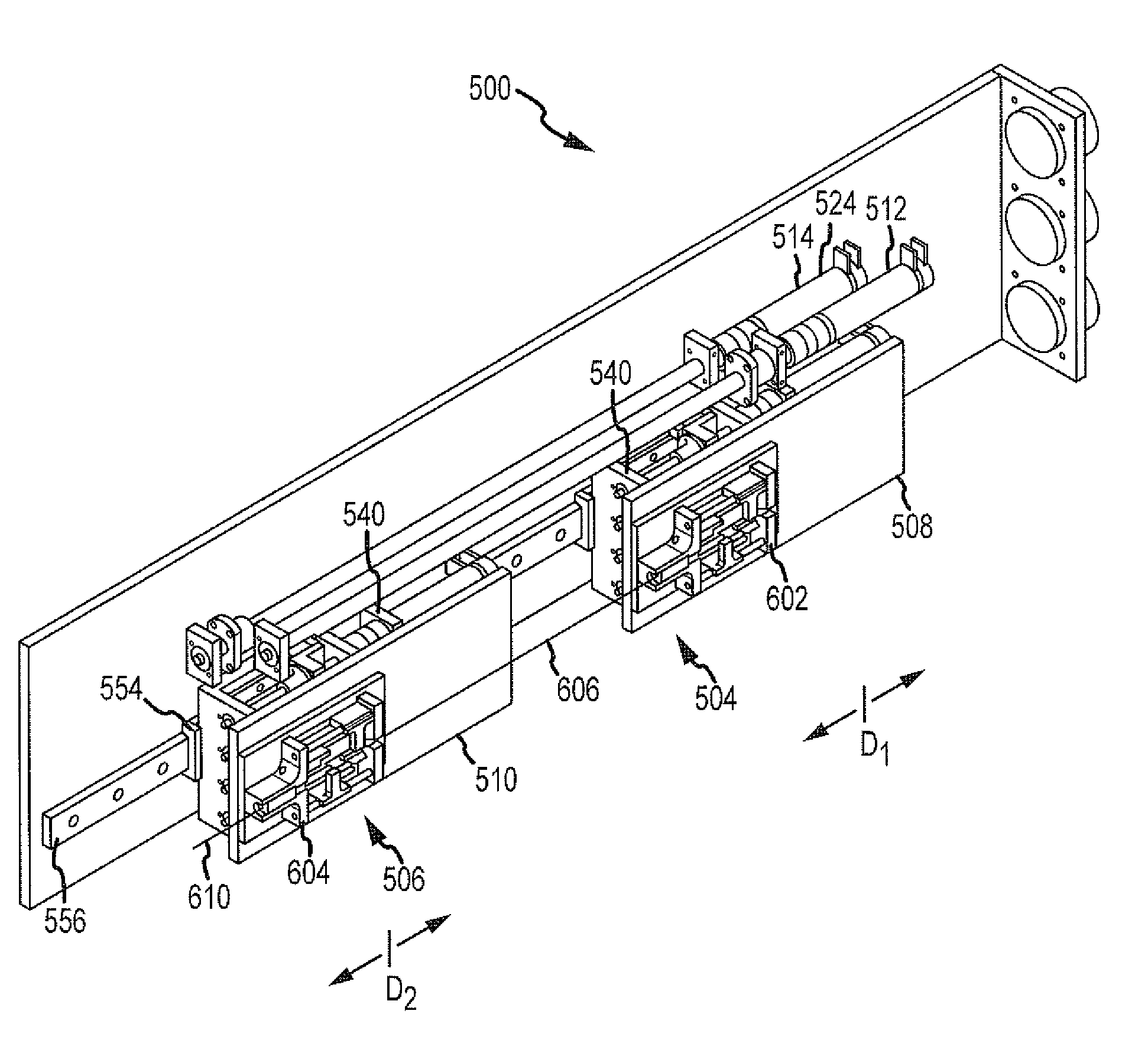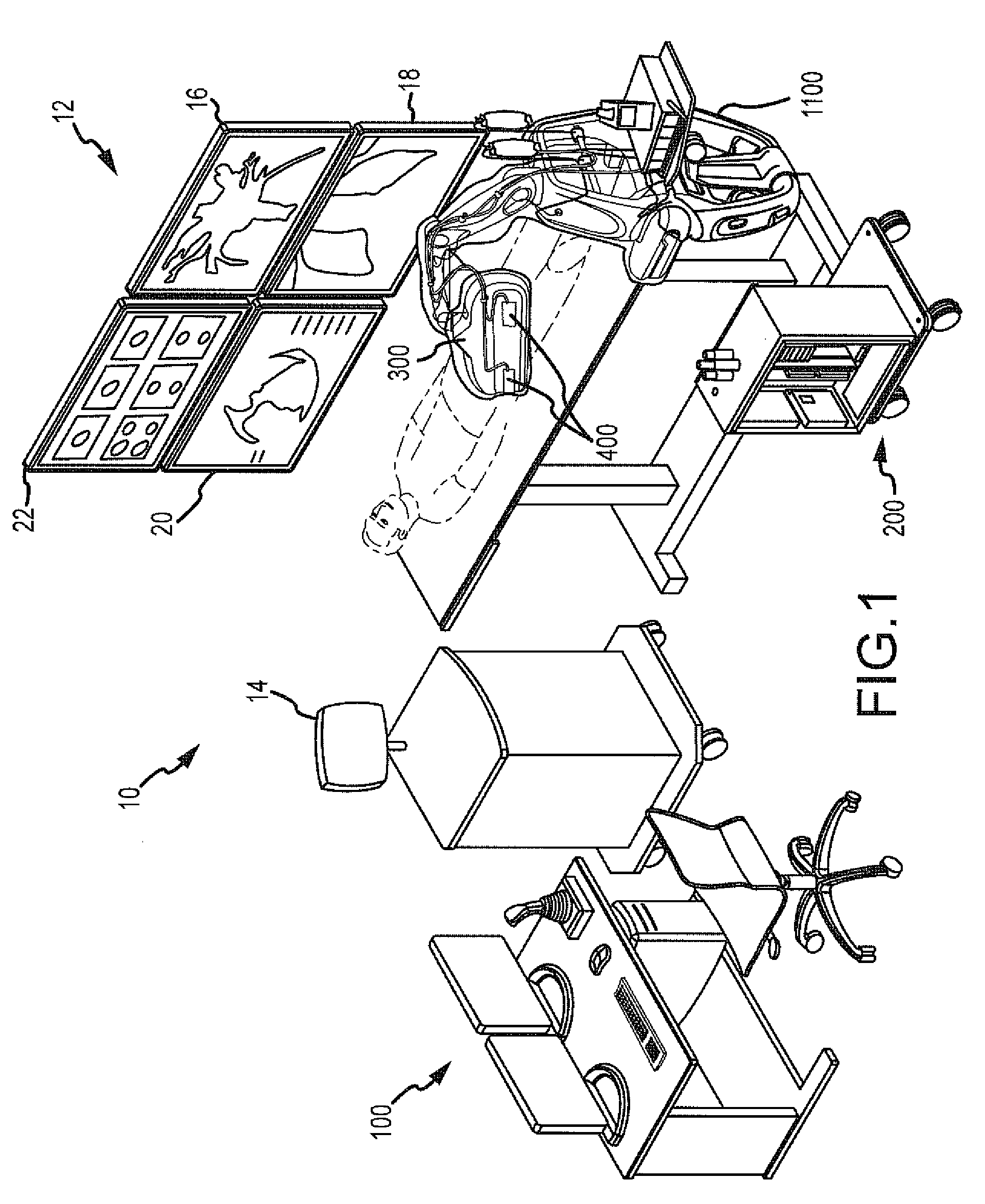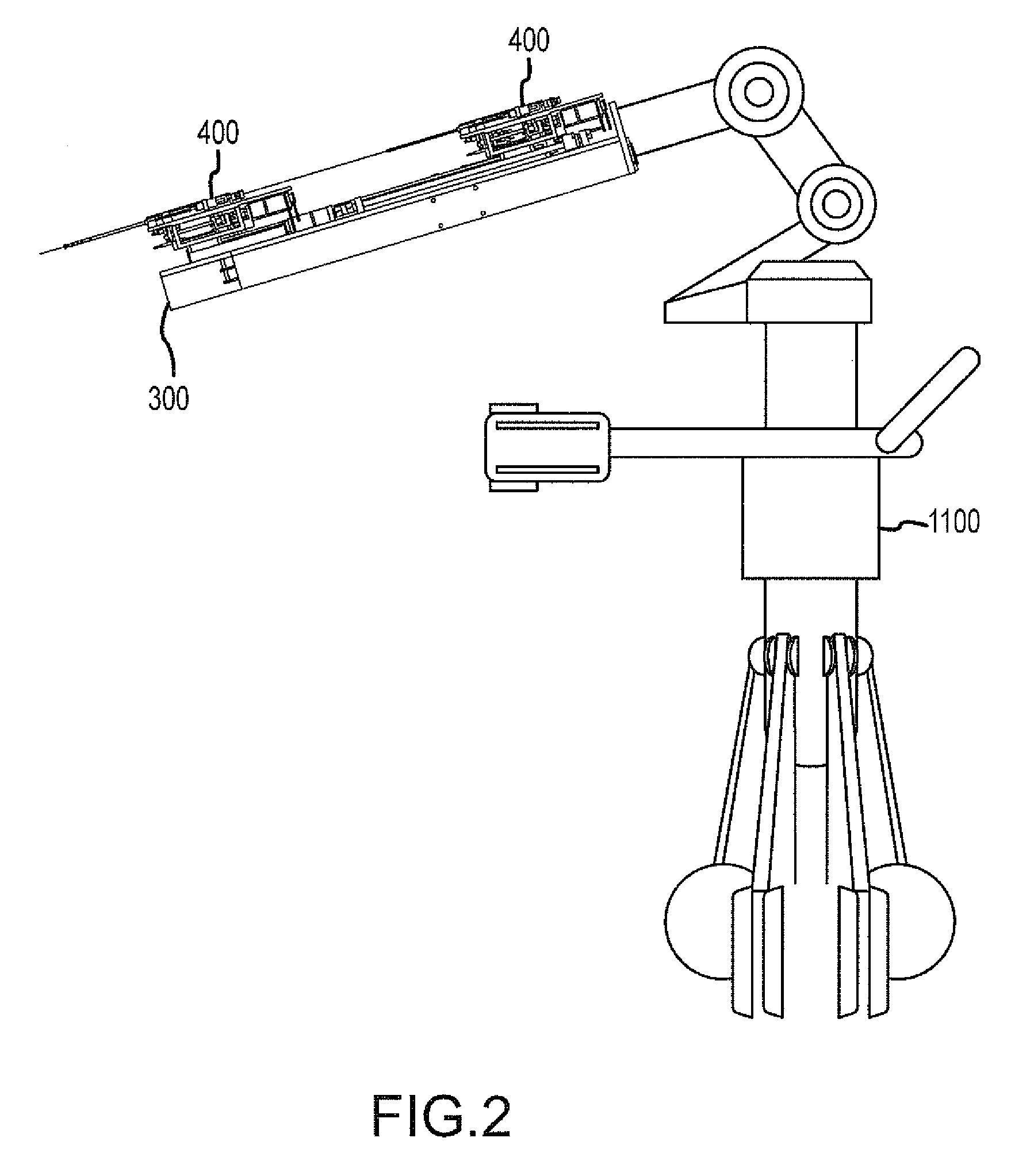Robotic catheter device cartridge
a robotic catheter and cartridge technology, applied in the field of robotic catheter systems, can solve the problems of varying ailments and even death, and achieve the effects of minimizing and/or eliminating radiation exposure, minimizing and/or eliminating procedural variability
- Summary
- Abstract
- Description
- Claims
- Application Information
AI Technical Summary
Benefits of technology
Problems solved by technology
Method used
Image
Examples
first embodiment
[0059]As generally shown in FIGS. 1 and 3a-3e and discussed in greater detail below and in commonly owned and copending application titled “Robotic Catheter Manipulator Assembly,” a manipulator assembly 302 may respectively include both catheter and sheath manipulator mechanisms 304, 306. In this arrangement, the catheter and sheath manipulator mechanisms 304, 306 may be aligned such that the catheter can pass through the sheath in a coaxial arrangement. Each mechanism 304, 306 may be further capable of independent advancement / retraction (shown generally as directions D1 and D2) and independent four-wire steering control (e.g., eight total steering wires, comprising four sheath control wires and four catheter control wires), as discussed in detail below.
[0060]With a configuration of robotic catheter system 10, such as shown in FIGS. 1 and 3a-3e, there will be relative travel of a first embodiment of catheter and sheath cartridges 402, 404 and relative movement associated with a port...
second embodiment
[0076]Referring to FIGS. 1, 2 and 9a-11e, robotic catheter manipulator assembly 500 will be described in detail.
[0077]As generally shown in FIGS. 1, 2 and 9a-11e, robotic catheter system 10 which includes one or more robotic catheter manipulator assemblies 300, includes the second embodiment of robotic catheter manipulator assembly 500 including both catheter and sheath manipulation mechanisms 504, 506 for manipulating, for example, a second embodiment of catheter and sheath cartridges 602, 604 (see FIGS. 11a-11e). Manipulator assembly 500 may include interconnected / interlocking manipulation bases 508, 510 for catheter and sheath cartridges 602, 604, and likewise may include electrical “handshake” functionality as discussed below. Each interlocking base 508, 510 may be capable of travel in the longitudinal direction of the catheter / sheath (D1, D2 respectively). In an embodiment, D1 and D2 may each represent a translation of approximately 8 linear inches. As shown in FIG. 9a (similar...
third embodiment
[0089]Referring to FIGS. 1, 2 and 12a-14e, robotic catheter manipulator assembly 700 will be described in detail.
[0090]As generally shown in FIGS. 1, 2 and 12a-14e, robotic catheter system 10 which includes one or more robotic catheter manipulator assemblies 300, includes the third embodiment of robotic catheter manipulator assembly 700 including both catheter and sheath manipulation mechanisms 704, 706 for manipulating, for example, a third embodiment of catheter and sheath cartridges 802, 804 (see FIGS. 14a-14e). Manipulator assembly 700 may include interconnected / interlocking manipulation bases 708, 710 for catheter and sheath cartridges 802, 804, and likewise may include electrical “handshake” functionality as discussed below. Each interlocking base 708, 710 may be capable of travel in the longitudinal direction of the catheter / sheath (D1, D2 respectively). In an embodiment, D1 and D2 may each represent a translation of approximately 8 linear inches. As shown in FIG. 12a (simila...
PUM
 Login to View More
Login to View More Abstract
Description
Claims
Application Information
 Login to View More
Login to View More - R&D
- Intellectual Property
- Life Sciences
- Materials
- Tech Scout
- Unparalleled Data Quality
- Higher Quality Content
- 60% Fewer Hallucinations
Browse by: Latest US Patents, China's latest patents, Technical Efficacy Thesaurus, Application Domain, Technology Topic, Popular Technical Reports.
© 2025 PatSnap. All rights reserved.Legal|Privacy policy|Modern Slavery Act Transparency Statement|Sitemap|About US| Contact US: help@patsnap.com



